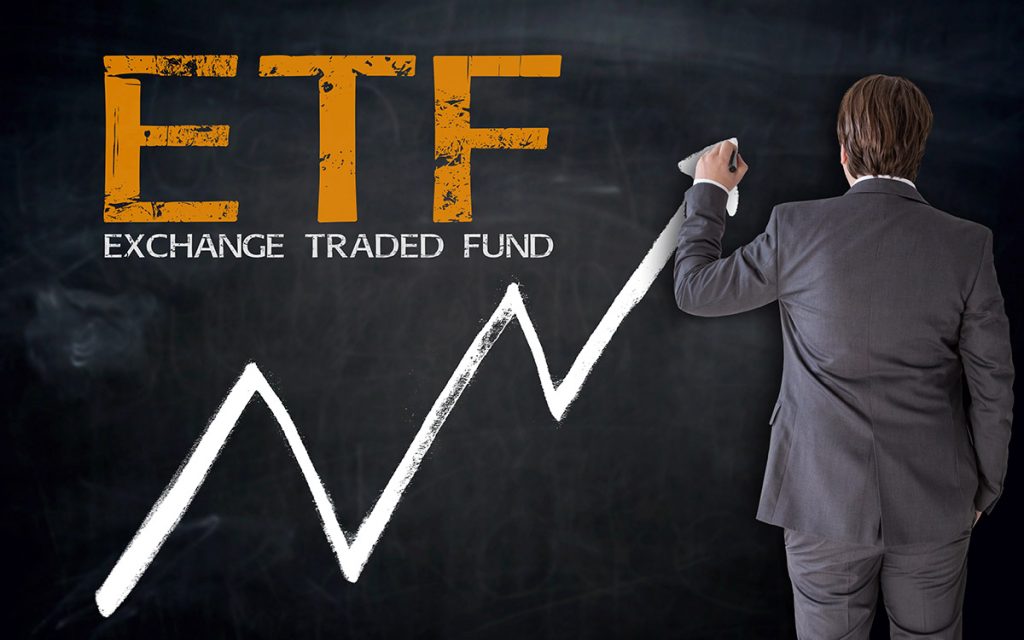Investing in Exchange-Traded Funds (ETFs) has become a favored strategy among savvy investors who seek to build a diversified investment portfolio efficiently and effectively. ETFs combine the best features of mutual funds and stocks, offering diversification, low cost, and ease of trading. In this guide, we will delve into how to construct a well-rounded all-ETF portfolio that aligns with your investment goals and helps you manage risk across various asset classes.
An all-ETF portfolio provides a straightforward approach to diversification, with the potential to enhance returns while minimizing risk. ETFs are versatile investment vehicles that can include stocks, bonds, commodities, and other asset types. They are traded on exchanges, similar to stocks, providing liquidity and flexibility that mutual funds often lack. This guide will outline the steps to building an all-ETF portfolio and discuss the advantages of using ETFs for your investment strategy.
Understanding ETFs and Their Benefits
ETFs offer investors significant advantages, such as lower expense ratios compared to mutual funds, transparency of holdings, and flexibility in trading throughout the trading day. They are passively managed more often than not, which means they typically track a specific index like the S&P 500 or the NASDAQ. This passive management style helps keep costs low while ensuring that the ETF mirrors the performance of the underlying index or asset class.
Selecting the Right ETFs
When building a diversified all-ETF portfolio, selecting the right ETFs is crucial. Consider ETFs across different asset classes, such as equity ETFs, bond ETFs, and commodity ETFs, to ensure broad market exposure. Additionally, explore niche markets through specific investment-focused ETFs, like technology or healthcare. For geographic diversification, look into international ETFs that cover emerging and developed markets.
- Diversification by Sector and Geography: Diversifying your ETF investments by sector and geography can help mitigate risk and capitalize on growth opportunities in various parts of the world.
- Risk Considerations: Choose ETFs that match your risk tolerance. For instance, bond ETFs generally offer lower risk compared to stock ETFs, while commodity ETFs might provide useful inflation protection but can be more volatile.
Constructing Your ETF Portfolio
After selecting your ETFs, construct your portfolio based on your investment objectives and risk tolerance. A common strategy is to use a core-satellite approach:
- Core Holdings: These should include broad-market index ETFs that form the foundation of your portfolio.
- Satellite Holdings: These can consist of sector-specific or thematic ETFs that may offer higher growth potential but come with higher risk.
Rebalancing is essential to maintain your intended asset allocation over time. This involves adjusting your holdings periodically to align with your original investment strategy, especially after significant market movements.
Monitoring and Adjusting Your Portfolio
Effective portfolio management doesn’t end after the initial setup. Monitoring market conditions and the performance of your ETFs regularly is crucial. This helps in making informed decisions about when to rebalance or adjust your investment approach based on new economic data or changes in your financial goals.
Frequently Asked Questions
What are the key benefits of an all-ETF portfolio?
How often should I rebalance my ETF portfolio?
Can ETFs be used for income-focused portfolios?
Are there any risks associated with ETFs?
What are the key benefits of an all-ETF portfolio?
ETFs typically have lower fees, offer greater liquidity, and allow for easy diversification across multiple asset classes. Additionally, ETFs provide transparency in terms of holdings, performance, and expenses. They also offer flexibility in terms of trading, as they can be bought and sold throughout the trading day like individual stocks.
ETFs also provide access to a wide range of markets and investment strategies, making it easier for investors to build a well-balanced and diversified portfolio. Lastly, ETFs can be tax-efficient compared to mutual funds, as they have lower turnover rates and can be more easily managed for tax considerations.
How often should I rebalance my ETF portfolio?
It’s generally recommended to review your portfolio at least annually or after significant market shifts to ensure it aligns with your risk tolerance and investment goals.
Rebalancing can help maintain the desired asset allocation and prevent your portfolio from becoming too heavily weighted in one particular asset class. Additionally, as some investments may outperform others over time, rebalancing can help capture gains and manage risk.
Some investors may choose to rebalance more frequently, such as quarterly or semi-annually, especially if they have a more active investment strategy or are trying to take advantage of short-term market opportunities.
Ultimately, the frequency of rebalancing is a personal decision and should be based on your individual financial goals, risk tolerance, and investment strategy. It’s important to consult with a financial advisor to determine the right rebalancing frequency for your specific situation.
Can ETFs be used for income-focused portfolios?
Yes, there are many bond ETFs and dividend-paying stock ETFs that can be used to generate income. Investors can use ETFs to create income-focused portfolios by selecting ETFs that track bonds or dividend-paying stocks. These ETFs provide a steady stream of income through regular interest payments or dividend distributions. Investors can choose from a wide range of income-focused ETFs based on their risk tolerance, investment goals, and time horizon.
Investors can also use ETFs to diversify their income sources. For example, they can invest in bond ETFs to generate fixed income and dividend ETFs to earn income from stocks. By diversifying across asset classes, sectors, and geographies, investors can create a more resilient income stream that can weather market fluctuations.
Furthermore, some ETFs offer the option to reinvest dividends automatically, allowing investors to compound their income over time. This can be particularly beneficial for long-term investors looking to grow their income stream and achieve financial goals.
Overall, ETFs can be a valuable tool for income-focused portfolios, offering diversification, liquidity, transparency, and cost-efficiency compared to individual securities or mutual funds. Investors should carefully research and select ETFs that align with their income needs and investment objectives.
Are there any risks associated with ETFs?
While ETFs reduce some risks by diversifying investments, they still expose you to market risk and the specific risks of the sectors or regions they cover. Additionally, ETFs may have tracking errors that result in a return that deviates from the index they are meant to track. They may also have liquidity risks, as some ETFs may have low trading volumes and higher bid-ask spreads, which can impact the price at which you buy or sell shares.
There are also risks associated with leveraged and inverse ETFs, which aim to provide twice or three times the return of an index or the opposite return, respectively. These types of ETFs can be particularly risky and are not suitable for all investors.
Lastly, there is also a risk of closure for some ETFs, as they may be liquidated if they do not attract enough assets or fail to perform as expected. Investors may incur costs or tax consequences if this occurs.
Overall, while ETFs can provide diversification and lower costs, it is important for investors to be aware of the risks involved and to carefully consider their investment goals and risk tolerance before investing in ETFs.
How do I start investing in ETFs?
Start by opening a brokerage account, then research and select ETFs that fit your investment strategy and goals.
Here are some steps to help you start investing in ETFs:
- Choose a brokerage account: There are many online brokerage platforms that offer access to ETFs. Choose a brokerage account that fits your needs and preferences.
- Research ETFs: Explore different ETFs and their underlying assets, expense ratios, performance history, and investment objectives. Consider factors such as diversification, risk tolerance, and investment goals when selecting ETFs.
- Decide on your investment strategy: Determine your investment strategy and goals, whether you are looking for long-term growth, income generation, or a mix of both. Choose ETFs that align with your strategy and risk tolerance.
- Place your trades: Once you have selected the ETFs you want to invest in, place your trades through your brokerage account. You can buy and sell ETFs just like individual stocks.
- Monitor and adjust your portfolio: Regularly review your investment portfolio and ETFs to ensure they continue to align with your goals and risk tolerance. Consider adjusting your portfolio as needed based on changes in the market or your investment objectives.
Remember to consider the costs associated with trading ETFs, such as brokerage fees and expense ratios, and consult with a financial advisor if you need additional guidance on building your ETF portfolio.
Conclusion
Building a diversified all-ETF portfolio is a powerful way to achieve your financial objectives while managing investment risk. By selecting the right mix of ETFs, you can take advantage of global markets and different asset classes effectively. We invite you to continue exploring our blog for more resources on ETFs and other investment strategies. Whether you are new to investing or looking to refine your current portfolio, our comprehensive guides and expert insights can help you make more informed investment decisions. Don’t hesitate to dive deeper into the world of ETFs and start optimizing your investment strategy today.




